Back at the Resolute base station, after our successful fifteen days of fieldwork on Ward Hunt Island, I remember asking Éliot and Eva: “Guys, if you had, let’s say, three choices, what would you rate as the most memorable moments we had together up there?” At that time, it was impossible for us to rank our memories. The discussion went on and on. “Snowmobiling across the ice rise was something else!” “Yes, and the first time the drone-radar flew, that was such an achievement!” “What about that day we pitched our safety tent on the north coast of the ice rise?” “True, and remember recording our little movie Dôme?” A few months later, even though I still can’t answer that question definitively, I will provide three great memories from this incredible expedition to the northernmost island in Canada.
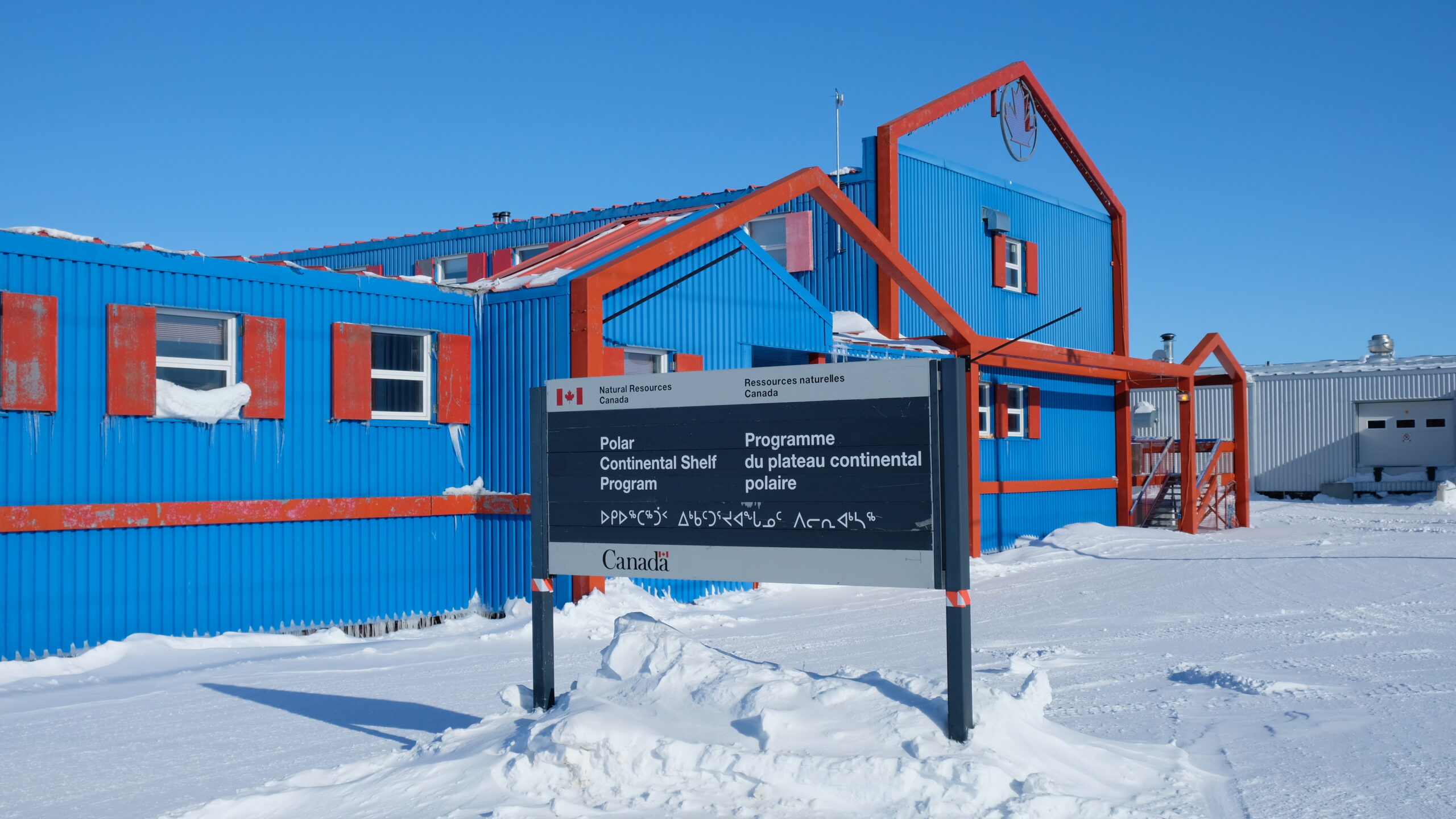
The Flight – 09/05/24
Finally, here I am, seated in the Kenn Borek Air Twin Otter, my nose pressed against the window. The first part of the job is done, and it was not easy: I have all my equipment with me on this plane, which I finally received at the base station yesterday, just a few hours before our departure to Ward Hunt Island. Beneath our feet lies the magnificent Ellesmere Island. To the east, the front of a gigantic glacier ending in the sea. In May, everything is still frozen. I can see hundreds, maybe thousands of icebergs, trapped again in the sea ice, like immobile pieces of a puzzle that a kid would have left behind, waiting for the summer to strike and the sea ice to melt.
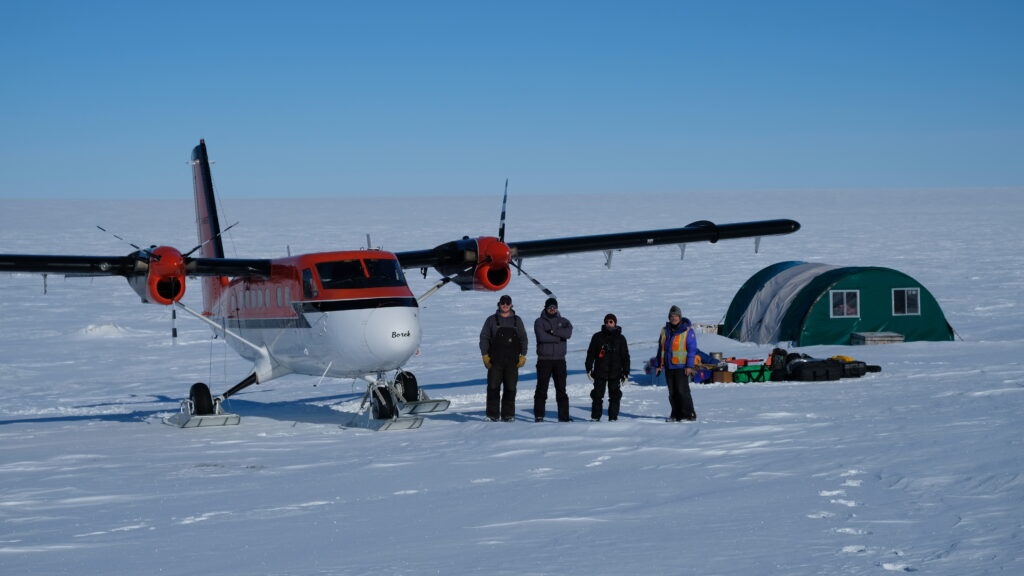
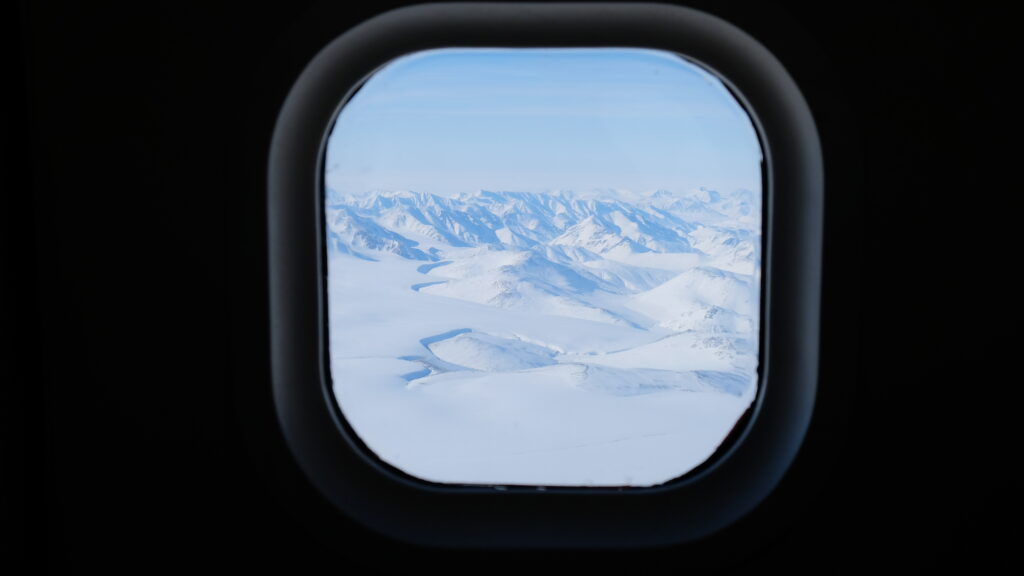
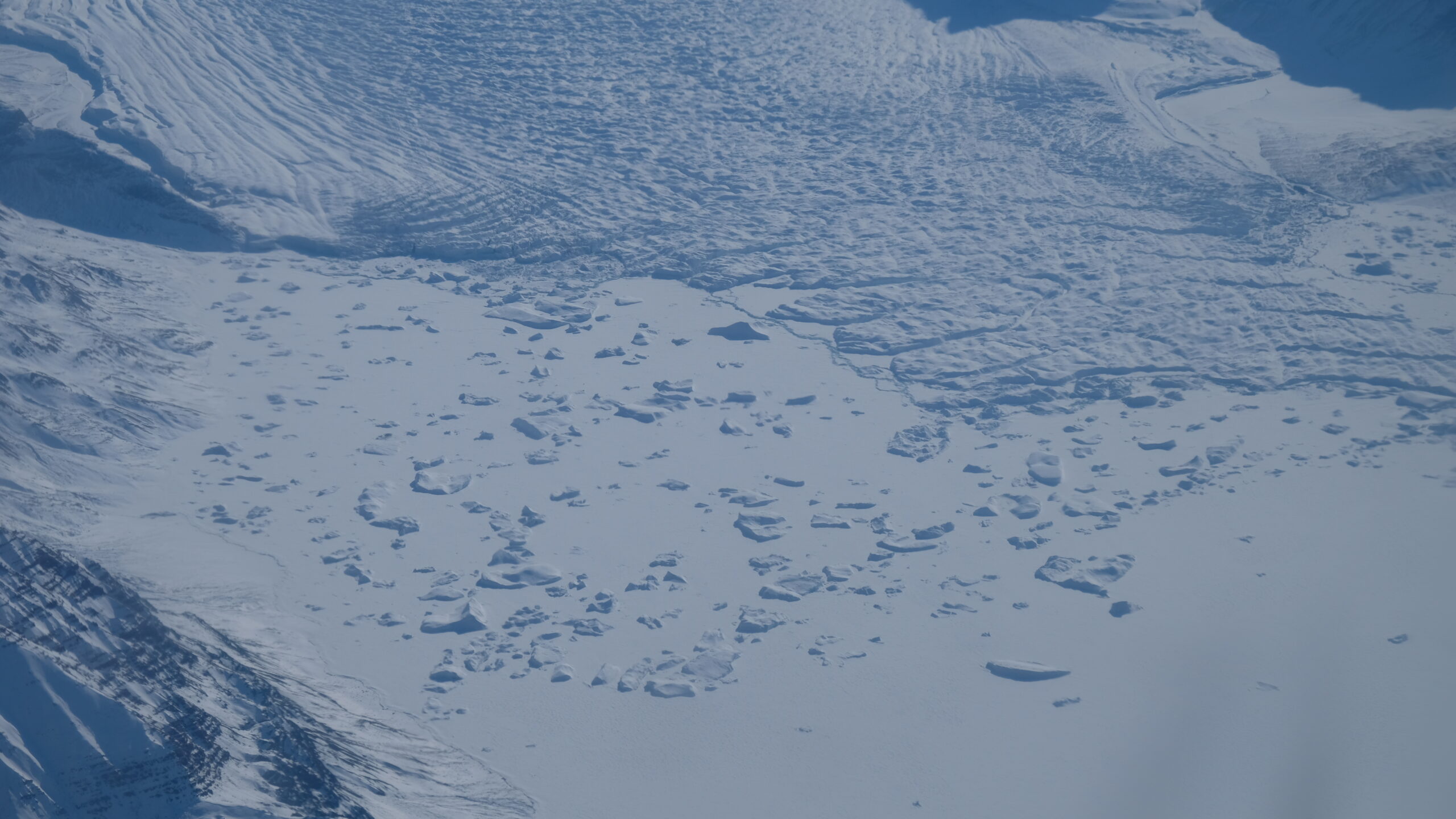
To the west, an ice cap. This is the first time I see one with my own eyes. It’s like an enormous amount of ice, placed here like custard on a crumble, flowing in all directions, leaving some rocky peaks breathing, eroded by the slow movement of the ice over thousands of years. To the south, the type of glacier that made me want to pursue glaciology: piedmont glaciers. The ice flows through a narrow valley toward an open area, where it can then spread horizontally in all directions. One of the most famous of them in North Greenland is called Elephant Foot glacier, a name that gives a clear idea of what it looks like. To the north, a few hundreds of kilometres in front of us, lies the little hilly Ward Hunt Island, separated from Ellesmere Island by a frozen sea channel. That’s where I will spend the next two weeks with my two colleagues, and now friends, Eva and Éliot, acquiring data over the Ward Hunt ice rise, a glaciological structure very specific to this location.
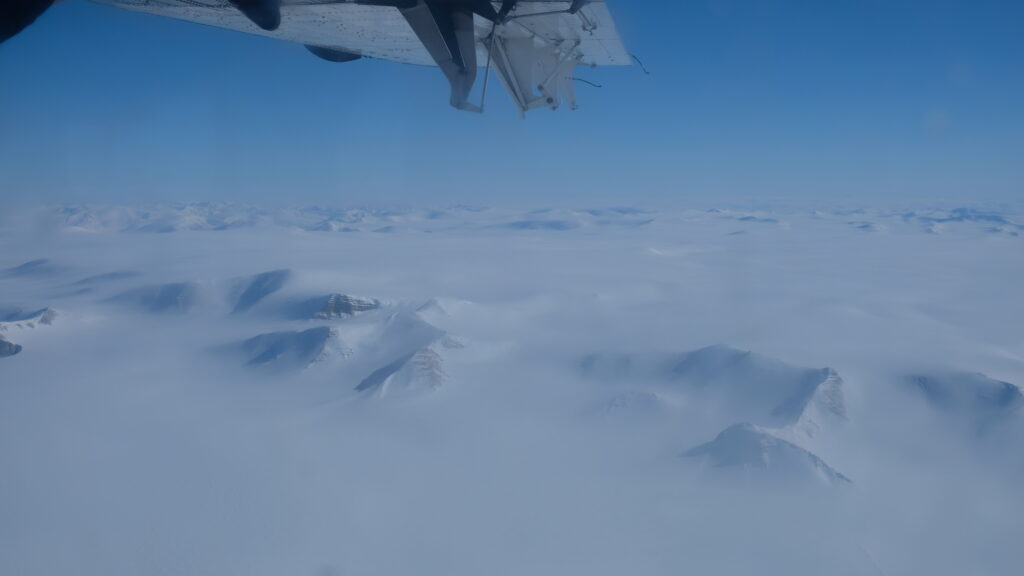

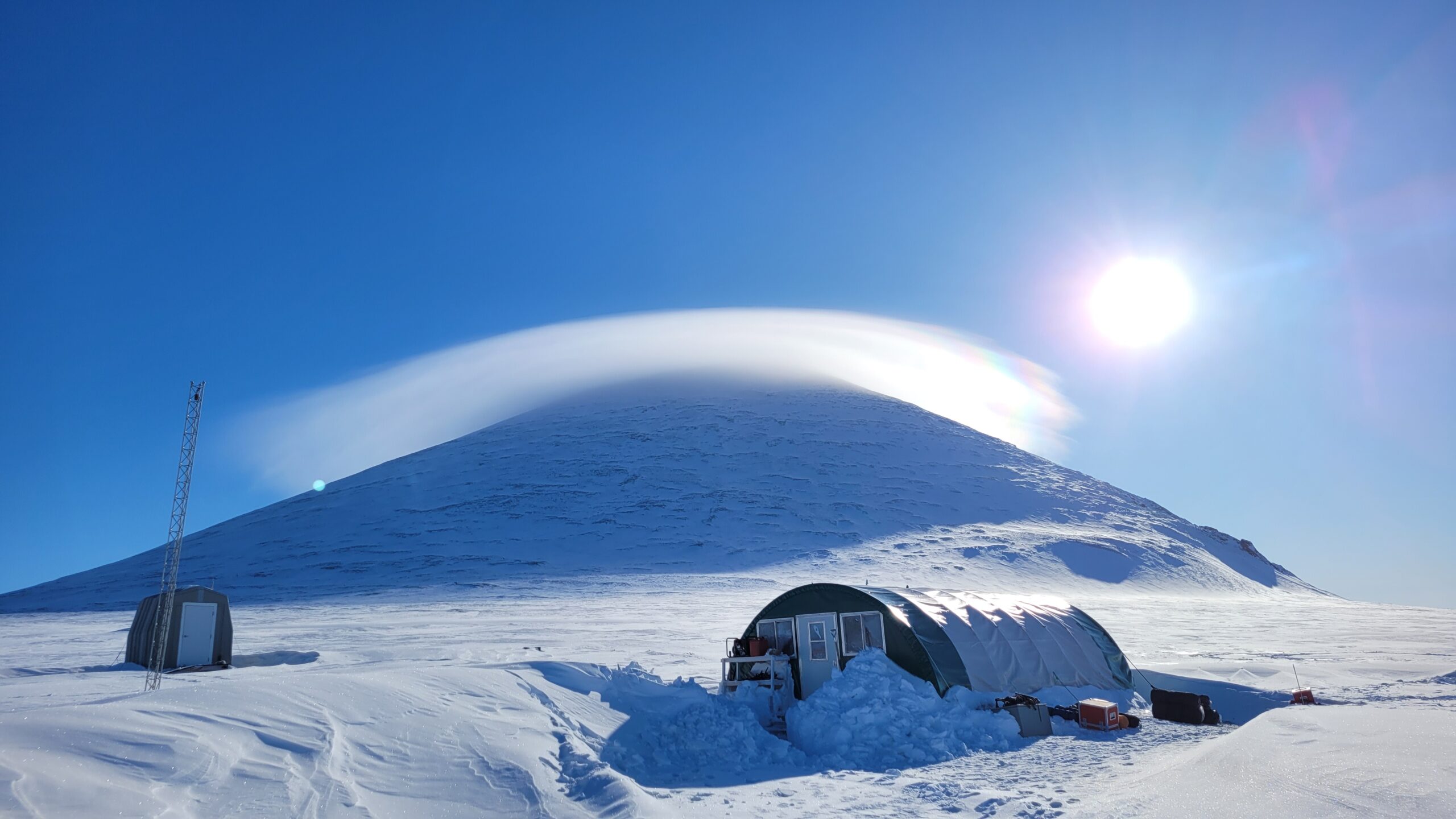
The Lake – 10/05/24
After a ten-minute snowmobile drive toward the centre of the island, we reach our objective: the lake. I find rather incredible that such a large lake lies here at the centre of the very tiny Ward Hunt Island. We are here to fill a few barrels with ice, which we will melt for drinking and cooking. We could melt snow as well, it would be easier to get as it’s everywhere around the camp, but ice provides us with ~50% of its volume in liquid water, much better than the ~10% provided by snow. As soon as we arrive at the lake, Éliot switches off the snowmobile, and the three of us stay silent for a while. We leave everything behind to admire the show that nature is gifting us: the frozen lake is crystal clear. When it froze, impurities within the water formed a magnificent 3D network of white walls which we can clearly see under the shining sun. Eva and Éliot are like me, on their knees, hands on the ice, astonished. I look at them and realise that we are the same kind of people, amazed by the show. Back at the snowmobile, we open our ice drill to make ice chips and fill our barrels to bring back to camp. In the fifteen days on site, we consumed eight of these barrels for drinking and cooking.

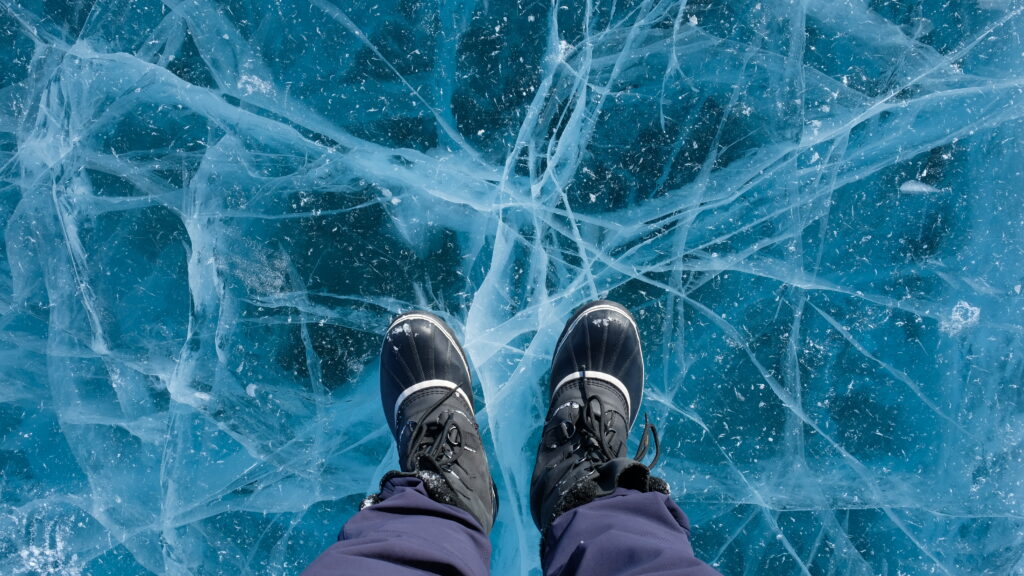
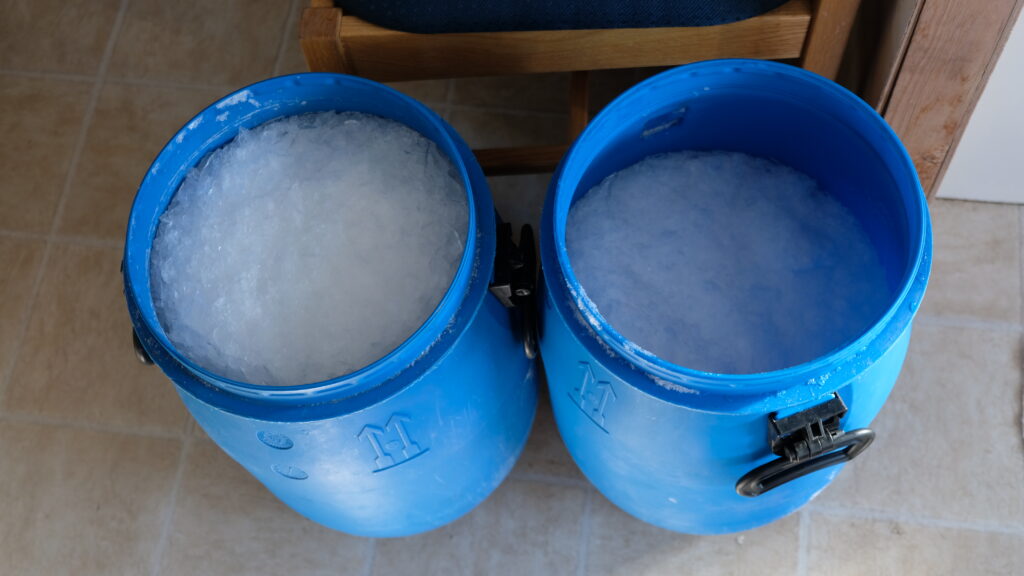
The Dance – 15/05/24
It is not the first time we reach the north coast of the ice rise; we already came a few times in the last few days. But today, however, we are acquiring snowmobile radar profiles across that glaciological wonder. We are getting the work done! This first profile crossing the entirety of the ice rise in latitude took us some time, around 30 minutes. We can’t drive fast, it’s cold, and the loud noise from our “Toutoune-mobile” is not very pleasant either. But as soon as we reach the north coast and switch off our engine, we hear the song playing through the little speaker we brought with us: “Joue pas, pas avec moi, car l’amour ça n’plaisante pas!” And that’s how, without even needing to talk, we are now dancing at 83°N, facing the North Pole.
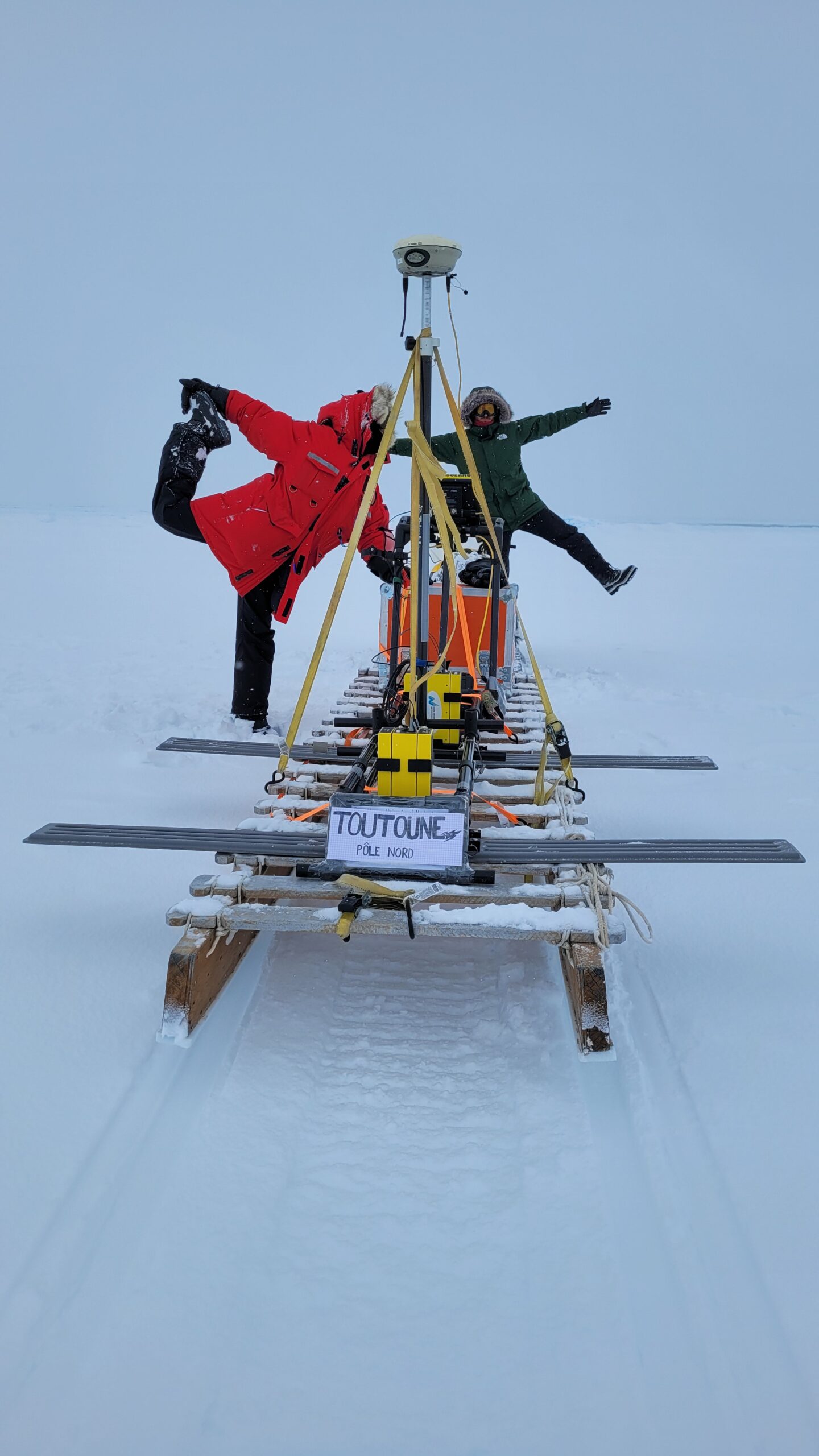
I would mainly like to thank Eva Thévenin and Éliot Sicaud for being the best company ever to pursue such epic fieldwork in such a unique place. I also personally thank Prof. Daniel Fortier and Prof. James Irving for their great support, as well as the Polar Continental Shelf Program and all their employees. Finally, I thank the Swiss Polar Institute for helping me financially through their Polar Access Fund, the SNSF for funding my PhD at the University of Lausanne, and my home institution, the University of Lausanne, the Faculty of Geosciences, and more specifically, the Institute of Earth Sciences.
Bastien Ruols is a PhD student in Glacier Geophysics at the Faculty of Geosciences and Environment of the University of Lausanne. His fieldtrip took place in May 2024 with financial support of a Polar Access Fund grant.